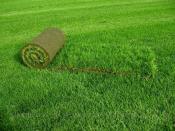Search
Login
Recommended
DIY garden paths made of plastic bottles
The autumn season is not only a time of harvesting a rich harvest, but also the optimal time for preparing a summer cottage for the winter, namely, for garbage collection. The plastic bottles left after the summer picnics are exactly the situation when it is a pity to get rid, and there seems to be no benefit from them. However, resourceful owners with rich imagination and great aesthetic potential will find the best way out of this situation. Creating garden paths from plastic bottles, in our opinion, is the best way to use plastic treasures, which can give the site additional originality. Interested in? Then this article is for you.
Content
- Garden paths made of plastic bottles. Preparatory Activities
- Paths from whole plastic bottles. Manufacturing technique video
- How to diversify a homemade track? Basic tricks
- Track from the bottoms of plastic bottles. How to do it yourself? video
- Tracks of traffic jams. Mosaic artwork
Garden paths made of plastic bottles. Preparatory Activities
It would seem, tracks made of plastic containers, what could be easier? But this event requires careful preparation. Firstly, you need to determine the type of garden path that you want to recreate in your own personal territory.

And there are several options:
1. Paths from whole plastic bottles;
2. Tracks from cut bottoms;
3. And finally, the tracks from the caps from plastic bottles.
We stock up with the necessary tools, in this situation it is a shovel, a bucket and scissors and get to work. Depending on the typical characteristics of the garden path, preparatory activities will also vary. But let's start in order.

Paths from whole plastic bottles. Manufacturing technique
In order to make a path out of whole plastic bottles, they dig a trench, the depth of which is 1.5 bayonets of a shovel and a wooden formwork is installed. The trench is covered with broken brick, glass, rubble and stones of various sizes, as well as other construction debris, they are covered with a 3-cm layer of sand on top and carefully packed. In accordance with the dimensions of the future path, an approximate number of containers is selected and covered with fine gravel, sand or dry earth and shaken thoroughly until the contents are compacted. Filled containers are placed horizontally in the prepared trench, while the necks should be located to the edges of the track.

To seal the lined bottles, place a board on them, and, after walking on it several times, we evenly seal them. The spaces between the bottles are filled with sand and dry cement and compacted again in the same way. Walking on the boards, remove the excess of dry filler and, pouring water, leave until the cement sets. After the cement has completely hardened, the formwork must be removed.
How to diversify a homemade track? Basic tricks
That's all, the track is ready. But sometimes the soul requires aesthetics, and for the track to be not only functional, but also a decorative element of the site, there are many ways. Here is some of them:

1. The first and easiest option is to use multi-colored containers for yogurt, a variety of colors that will invariably please the eye;

2. And you can not look for easy ways and take the usual transparent plastic bottles and before you pour crushed stone and sand into them, put pieces of foil, colored paper and shiny candy wrappers in them. So you get rid of excess garbage and give the track an additional decor.

But this can not be limited. Having removed the formwork, you will notice that the necks located at the edges slightly spoil the general appearance of the decorative track, and maybe a little disappointed. But this problem also has the simplest solution to the curb from the same plastic containers.

For these purposes, the bottles are also filled with sand and placed in the prepared trench with the neck down. This will not only protect the track from destruction, but also give it additional originality. If you show your imagination, you can organize a similar border not only as an addition to the garden path made of plastic bottles, but as an independent decoration element that can be used as a fence for a flower bed or other landscape design elements.

And as a decoration for the path of bottles, at the same time, you can use a do-it-yourself border made of bricks or flowers.

Track from the bottoms of plastic bottles. How to do it yourself?
In order to recreate a track from the bottoms of plastic bottles on your site, you need to carry out the same preparatory steps as when making a path from whole plastic containers: dig a trench, fill it with construction waste and a 3-cm layer of sand and carefully tamp, then the procedure changes.

Together with whole plastic bottles we take the scissors and the same plastic containers and cut off the bottoms, while leaving a fifth of the bottle.

In the meantime, we prepare the trench by carefully moistening the layer of sand with water (remember that the sand should be well moistened).

The bottoms are deepened into the sand until it stops, if they are colored, then you can show imagination and lay out the most exquisite patterns, and in between the bottoms you can put lids on plastic containers to get a one-piece panel.


Further, according to the same scheme, we lay out the boards, walk along them, condensing them, and admire the result.
For owners who are professionally engaged in gardening, the following advice will be useful: you do not need to throw out the necks from plastic containers, in the spring they can act as excellent greenhouses.

Tracks of traffic jams. Mosaic artwork
Having considered the above methods, you were able to make sure that plastic bottles are not only cheap material, but also waste-free. In conclusion, it remains to consider the last option, implying the manufacture of garden paths from corks of plastic bottles. You can do this in several ways:

1. Put the cork evenly, creating an even coating;

2. Or with the ribs up, then you can use the track as a massager for the legs.
To do this, again dig a shallow trench, the dimensions of which correspond to the desired dimensions of the future track. The main problem of your idea can be only the amount of material, which will require not just a lot, but a lot. Therefore, in order to implement it, you will need to inform all your friends and relatives about your plans in advance, which together will help you collect the necessary amount of material.

So that the material does not change its location over time, the technology of their installation is slightly modified. So what do we have? As before, to create a garden path from the covers, dig a trench, the dimensions of which correspond to the dimensions of the future path, fill it with construction waste and carefully compact it.

In the meantime, prepare a solution consisting of one part of cement and four parts of sand, and add construction glue, which is necessary so that the caps do not subsequently change their location. Then caps are placed on the solution, this can be done either in a chaotic manner, or by observing a certain sequence that will allow you to create an exquisite pattern on the track. In this case, the lids must be immersed as deep as possible in the solution, and when it dries, get rid of its excess.

Then, as before, the boards are laid on the newly laid track and carefully tapped with a hammer. Experienced summer residents, previously practicing the creation of a garden path from lids, calculated that more than a thousand plastic covers would be needed to lay one meter of the path.

Having completed all of the above activities, you can enjoy the colorful mosaic track, the only drawback of which is the high slippery of the track in the winter. But this problem is easily solved, just sprinkle sand on the track.







